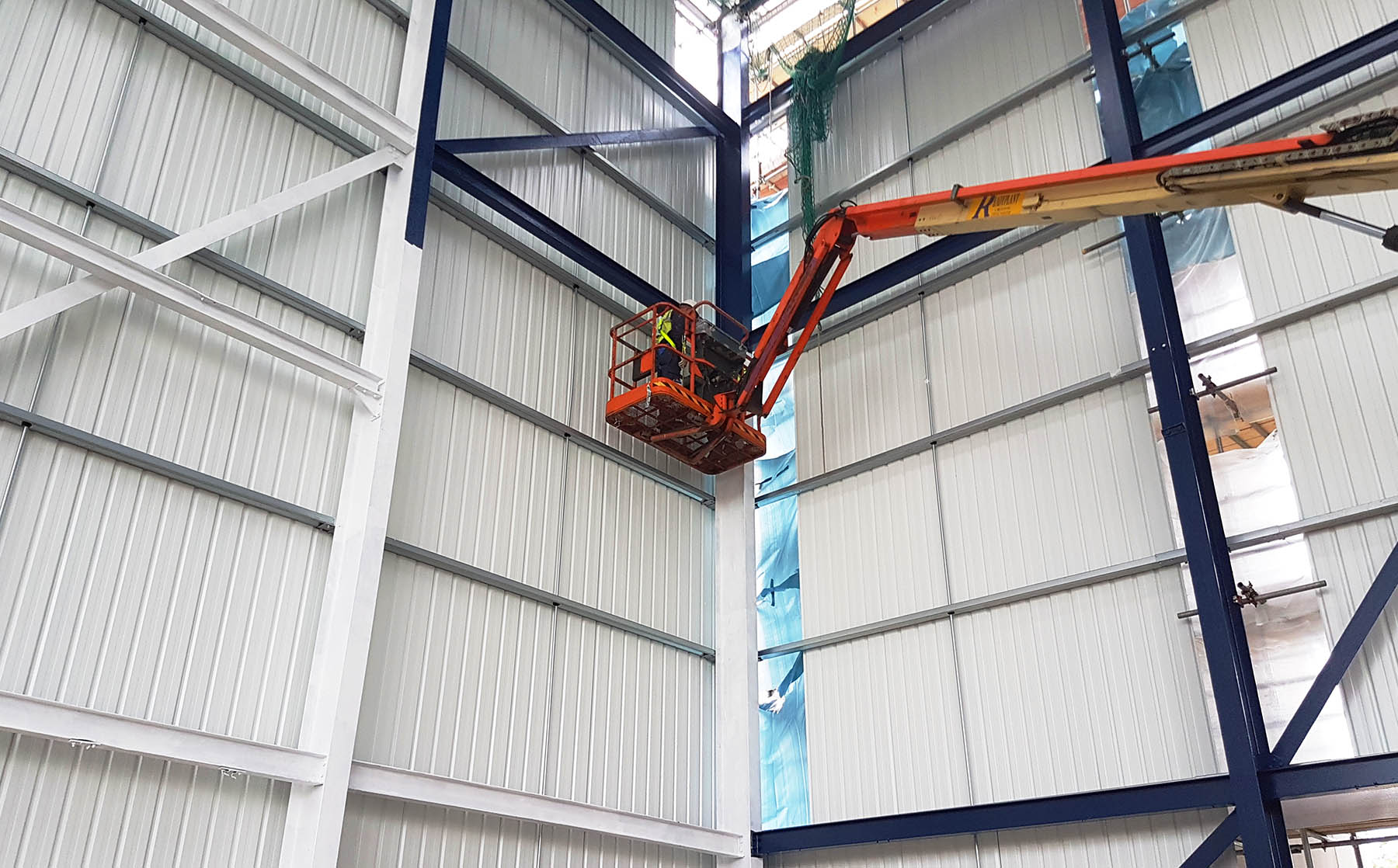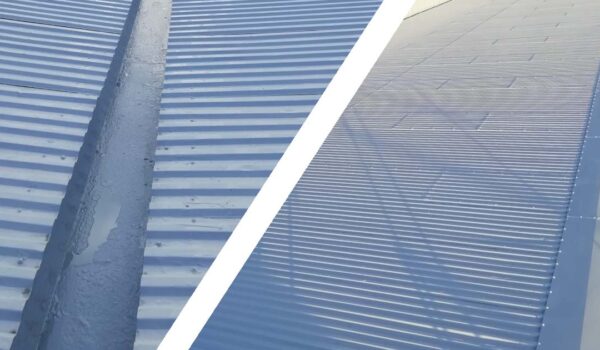Well maintained metal cladding looks great and protects buildings from the elements. Its also inexpensive compared with other building materials. Just some of the many reasons why its so popular. Especially with warehousing, industrial and retail buildings. However its not uncommon for it to become worn and weathered after a relatively short period of time. Driving rain, wind and extremes in hot and cold weather all contribute to paint fading and corrosion.

During the manufacturing process metal cladding is composite coated for maximum corrosion resistance. The metal is galvanise with either zinc or zinc–aluminium alloy. This provides excellent protection against corrosion. Decorative finishing layers are then applied to achieve an attractive appearance. The cladding is installed and care is taken not to damage the protective layer. Any chips, dents or scratches will drastically reduce resistance to corrosion.

Problems with cladding
Over time and while under constant attack from UV light, rain, wind, hot and cold conditions, the protective coating will eventually begin to fade. Cladding is also more likely to suffer from impact damage, especially at ground level. This will accelerate degradation exposing the substrate. Corrosion will rapidly take hold. Initially this will occur below the surface. Delamination and bubbling of the paint will cause the protective coating to peel off. Large ugly patches of rust then begin to spread.

Another issue is chalking. Its almost inevitable and happens slowly over time. Lighter coloured paints are more susceptible to chalking. Sunlight and rain degrade the binder in the paint. A white chalky powder then forms on the surface of the paint. This can erode the paint and run down onto adjacent areas or brickwork or rendering, causing staining.
In no time at all the building becomes worn and shabby looking. Clients and customers begin to notice. Tenants will complain and potential tenants will be put off. Its time to act fast!
Dealing with cladding problems yourself
Damaged and corroded cladding is usually easy to spot. If you can see a problem, it needs to be fixed. The sooner you act the less expensive it will be to put right. If you notice any localised spots of rust or chalking, this will probably be repeated elsewhere on your cladding. Carefully check the entire building, inside and out. This should be done routinely at least once every twelve months.
When you spot a problem take a close look if you can and gently tap the affected area. If the paint is largely intact, clean and spot repair the paint yourself. Any bubbling or loose paint should be scraped away. The exposed metal should be cleaned and dried. At least two coats of metal cladding paint should be applied. Follow the paint manufacturers instructions.

Hiring a professional contractor
When your cladding issues are extensive or you simply don’t have the time and resources, hire a professional cladding contractor such as ourselves. Its safer and costs less than you might think. We will carry out a full site survey and draft a full report. We will make recommendations and provide repair and restoration options for your cladding. We will also work to your budget and time constraints to minimise disruption for you and your tenants.



